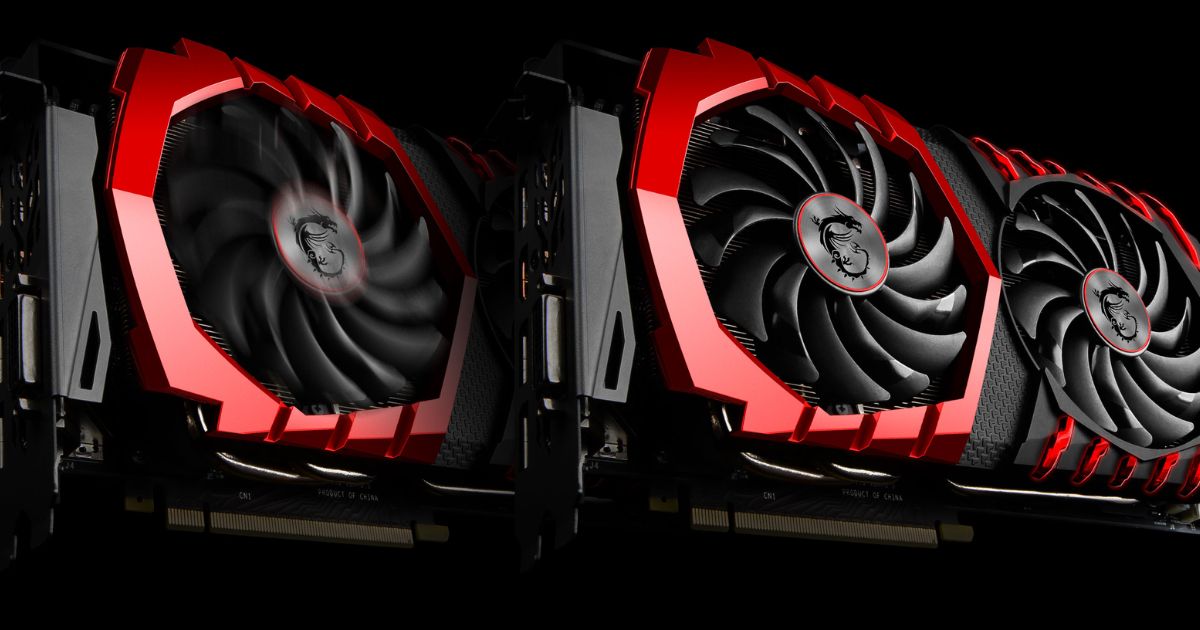This article explains when GPU fans start spinning and whether they are always meant to spin. It discusses reasons GPU fans may run constantly and ways to troubleshoot fan issues like fans not spinning. Read on to learn how to fix GPU fan problems and optimize your fan’s performance.
GPU fans play an important cooling role, but some issues can cause fans to malfunction. Determining if your card’s fans are behaving as intended requires understanding their normal operation. We’ll explore the different factors that influence fan speed and spin direction.
Within this comprehensive guide, you’ll find explanations of standard GPU fan behavior and potential causes of abnormal operation. There are also tips for diagnosing specific fan issues and steps to take to resolve them. By the end, you’ll know if your card’s fans require adjustment or repair.
When Do Gpu Fans Start Spinning?
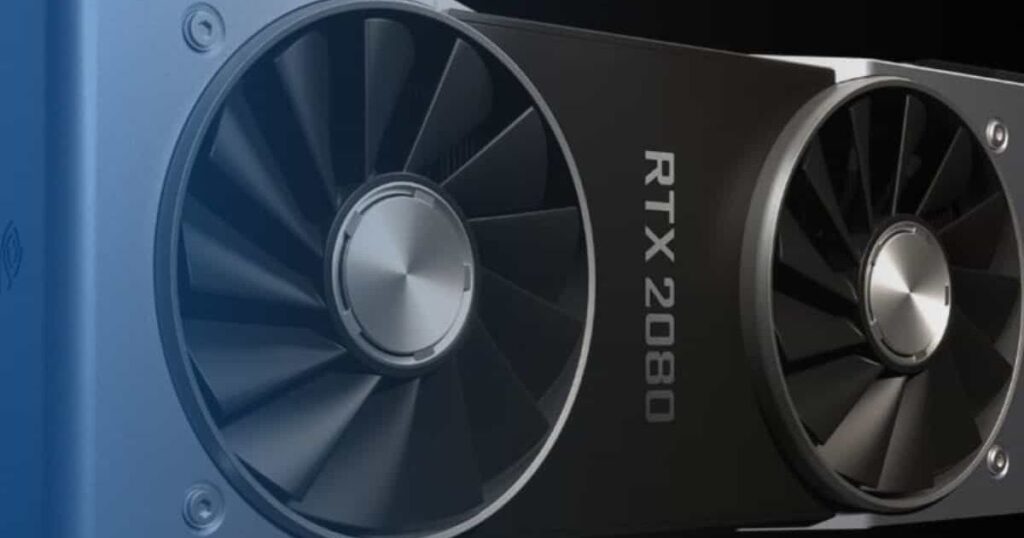
GPU fans are triggered to start spinning based on the GPU’s internal temperature. As the chip heats up from workload like gaming, fans will engage to dissipate rising heat. Most manufacturers program fans to activate around 50-60 degrees Celsius. The fans will then gradually increase speed the hotter the GPU gets to maximize cooling effectiveness. Always-on low-speed fan modes may also run to prevent overheating during intense tasks.
Some high-end graphics cards feature zero fan mode technology that disables fans completely until threshold temperatures. This improves silence during light loads. Otherwise, fans will kick in according to their pre-set thermal curves programmed by the manufacturer. Without proper functioning cooling, GPUs cannot maintain performance and stability over extended periods under heavy loads. Resetting the graphics card can also help regain control of the fans if they become unresponsive to temperature changes.
Can You Make Your GPU Fans Always Spin?
Graphics card fans are designed to operate based on temperature thresholds for optimal performance balanced with noise levels. However, some users want fans running at all times. Many GPU monitoring software packages let you manually override automatic controls and set constant fan speeds.
Be aware this reduces fan life expectancy and increases noise over constant default operation. It’s generally not recommended except in specialized circumstances. A better approach is adjusting the default thermal curves upward slightly if wanting more aggressive fan profiles. Overall GPU temperature and stability should be prioritized over noise considerations in most typical PC usage scenarios. Proper case ventilation helps avoid always-on fan situations.
Are GPU Fans Supposed to Spin Constantly?
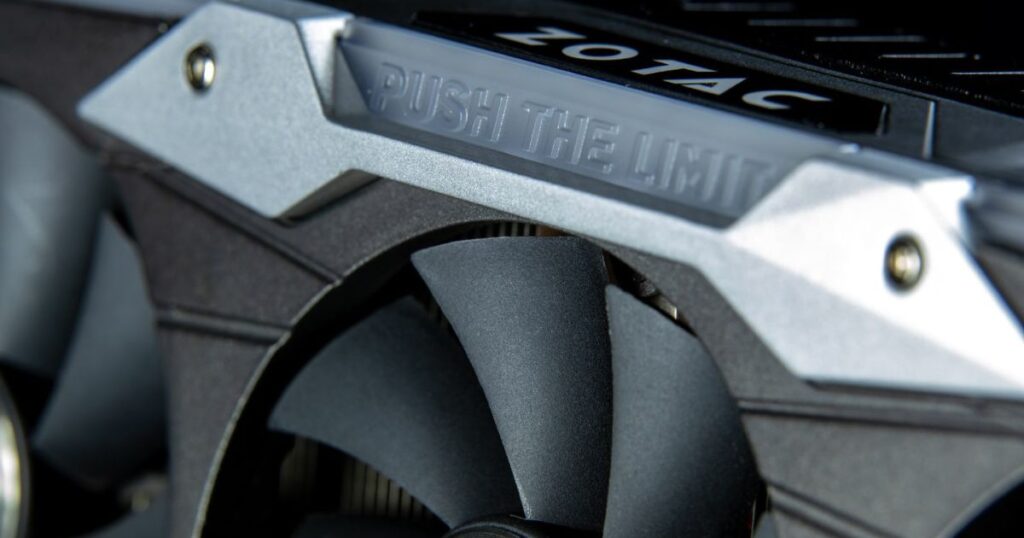
For typical consumer graphics cards, fans are not intended to run at full speed continuously. They are engineered to stay off until a certain GPU temperature is reached. This protects the overall card lifespan from excess wear caused by needless high fan speeds. Constant max fan operation solely for noise reduction is detrimental to components over the long term.
Most reputable graphics card models contain thermal management firmware keeping fans inactive during light or no loads. This promotes near-silent operation during everyday desktop tasks needing little GPU power. Fans will still spin up automatically as required to cool heavy workloads and prevent overheating. Only in specialized high-performance applications like data center servers are constant 100% GPU fan modes useful.
What Causes GPU Fans To Always Spin?
Some common reasons GPU fans may refuse to stop spinning include overheating, outdated drivers, lack of case cleaning, and actual fan faults. The GPU is trying to regulate temperature through constant airflow. Detailed issues include dust buildup trapping heat, aging thermal compound insulation, or broken fan bearings hindering optimal cooling.
Other potential culprits are software bugs creating false temperature readings or faulty sensors incorrectly signaling overheating. The GPU may also be under heavy sustained load from crypto-mining software, video transcoding tasks, or stress testing applications constantly pushing it to thermal limits. Proper troubleshooting is required to identify and resolve the root underlying cause forcing constant fan action.
Overheated GPU:
An overheating GPU will run its fans at full speed continuously in an attempt to cool down. Check for blocked vents, inadequate case airflow, or faulty cooling components like damaged heatsinks.
The Bios Driver Is Outdated:
Old GPU BIOS drivers can disrupt the fan control algorithm. Ensure all graphics card software is fully up-to-date to fix potential bugs causing erroneous fan behavior.
You Haven’t Cleaned Your Case In A While:
Dust buildup acts as poor thermal insulation around the GPU. Clean away dirt and debris from heatsinks and fans with compressed air for better heat dissipation and fan control.
Faulty GPU Fan:
A bad fan bearing or damaged blade may prevent intended off-speeds. Test fans individually to identify faulty units needing a replacement for appropriate temperature-based control.
Software Issue:
Certain programs could interfere with thermal controls or introduce glitches that read wrong temperatures. Close unneeded apps and services using GPU resources.
Hardware Issue:
Problems in temperature sensors, VRMs, or other circuitry might falsely signal overheating constantly. hardware diagnostics can detect electrical or soldering flaws.
Temperature Setting Issue:
The GPU’s internal temperature triggers are too low, forcing fans on sooner than intended. Adjust trigger points through monitoring software.
How Do I Fix A Gpu Fan That Always Spins?
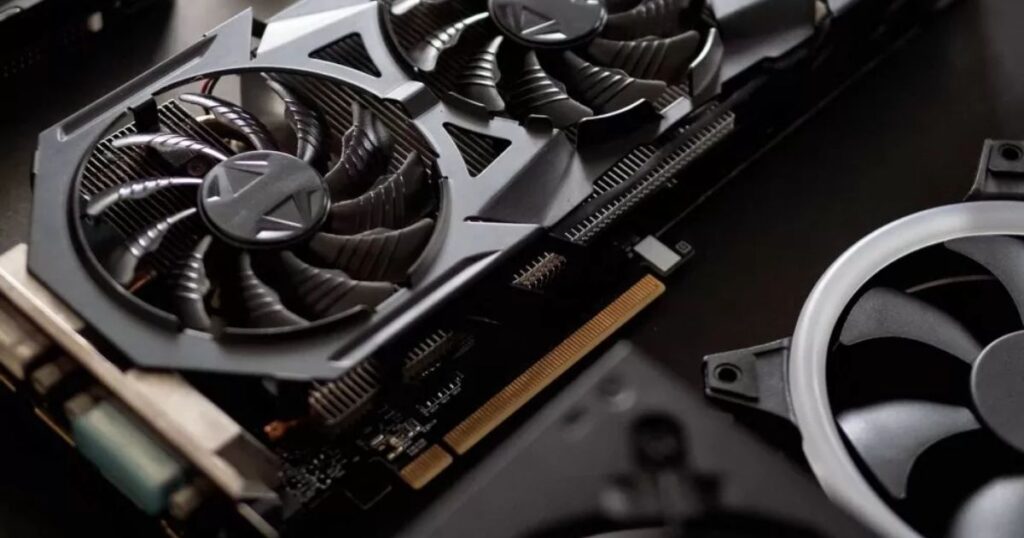
First, determine the cause through diagnostic steps like ensuring proper ventilation, reviewing software loads, and monitoring temperatures with GPU utilities. This will help pinpoint if it’s overheating, a driver error, or a physical fan fault. To address overheating, clean out dust bunnies and replace aging thermal materials. For driver issues, fully uninstall and reinstall graphics software.
To repair faulty fans, may require disassembling the cooler shroud if still under warranty. Otherwise, replace damaged fans with models matching the original voltage. Setting custom thermal profiles through monitoring tools can better control trigger points and minimize unnecessary spinning. Properly addressing the underlying issue is necessary to restore default temperature-based behavior.
Replace Faulty Gpu Fan:
Physically swap out any dead or damaged cooling fans with identical voltage replacements. Connectors must be plugged into the right header locations on the GPU PCB for functioning temperature control.
Update Your Drivers:
Fully uninstall Graphics drivers with the use of the Display Driver Uninstaller utility. Then reinstall the latest stable version released by the manufacturer for potential bugs and compatibility fixes.
Set GPU Fan Temperature:
Use applications like MSI Afterburner to create a custom fan curve, raising the activation point higher than default to avoid unnecessary low RPM spinning under lighter loads.
Solve The Hardware Problem:
Apply new thermal paste between the GPU chip and heatsink or replace an aging cooler. Look for any damaged electronics on the PCB possibly disrupting sensors.
Reduce GPU load:
Lower graphics settings in games or close background tasks utilizing GPU resources to lessen processor workload and lower fan activation triggers.
Clean Your Case Regularly:
Prevent heat buildup from accumulating dust interfering with ventilation and forcing constant cooling. Remove dirt-blocking airflow every couple of months.
GPU Fans Not Spinning? 7 Ways to Fix It
If your GPU cooling fans suddenly stop working, don’t panic. There are several things to check before assuming the worst. First, verify the issue under full load by stress testing. This confirms whether fans simply aren’t spinning as expected or have truly failed. Next, reseat the graphics card fully and check all power cables connecting the card and fans are firmly plugged in.
You should also inspect cooling elements for dirt buildup restricting airflow and interfering with sensors. Use compressed air to dislodge any dust-blocking fan blades from spinning freely. Beyond that, try updating drivers, adjusting fan curves in monitoring tools, swapping the GPU to another system, or seeking manufacturer diagnostics if still under warranty. Taking proactive steps can fix many winding cooling issues before considering an RMA or repair.
Test the GPU Under Heavy Load:
Stress the graphics card using a benchmarking utility to induce heavy GPU usage and monitor fans. This validates if they activate appropriately under thermal duress.
Reseat the GPU and Check the Cables:
Remove and reinstall the card fully into the PCIe slot ensuring a secure connection. Also, examine fan power cables for breaks or loose connections cutting power.
Clean the Dust From the GPU:
Remove any built-up dirt-blocking vents using compressed air. Dust particles disrupt cooling by trapping excess heat near components.
Update the GPU Drivers:
Newer drivers often include fixes for bugs affecting factors like fan controls. Try completely removing old drivers before installing an up-to-date version released by the manufacturer.
Control the GPU Fan Curve:
Use monitoring tools to set a more aggressive custom fan speed curve that activates fans sooner if default settings aren’t triggering them sufficiently under stress.
Test the GPU on Another System:
Attempting to test inside a different computer verifies if low-level system components could be inducing the no-spin issue. A functional card rules out lingering driver conflicts.
Return the GPU to the Manufacturer:
Contact the brand to submit the card for evaluation if still under warranty. Their technical experts employ specialized equipment for accurately diagnosing more complex problems.
Should Graphics Card Fans Always Spin?
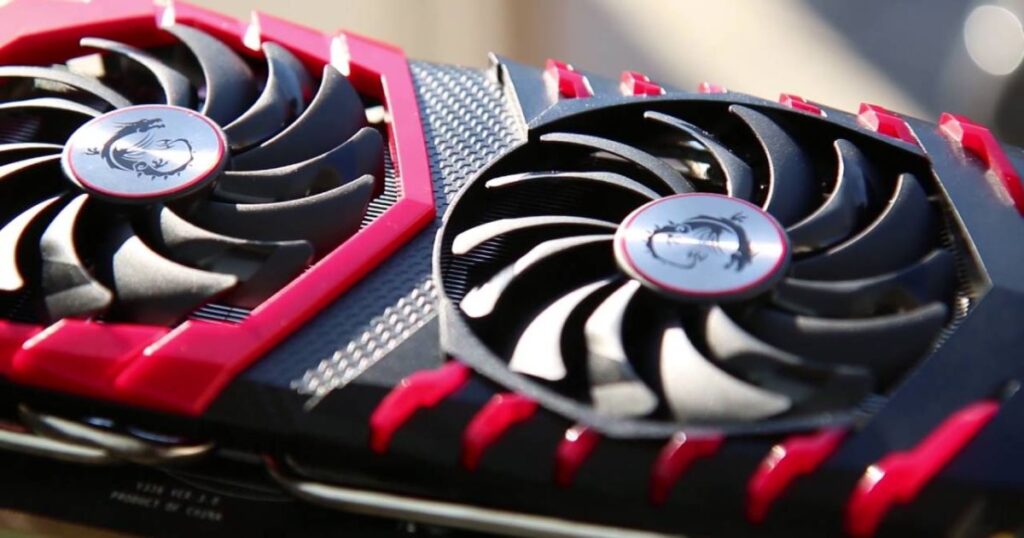
Graphics card fans are designed to operate based on the GPU’s temperature rather than running constantly. However, there may be exceptions:
- When performing rendering workloads putting sustained heavy loads on the card
- For mining rigs kept at high usage over extended periods
- In small form factor PCs lacking proper airflow
- If the card’s cooler is malfunctioning or too dirty
- When testing or benchmarking a card’s thermal capabilities
Are GPU Fans Supposed To Spin All The Time?
No, for typical gaming and day-to-day usage scenarios GPU fans are not meant to spin at full throttle constantly. Their operation is carefully programmed by manufacturers to balance cooling efficacy with low noise levels and long component life. Computer builders design cases with ample ventilation for occasional fan use, not continuous overwhelming noise.
That said, extreme overclockers or specialized workstations under heavy sustained rendering workloads may require adjustment of fan curves to maintain safety and stability. Poor case airflow due to limited chassis size or lack of cleaning can also force higher fan duty at lower temperatures than intended. Overall, most gaming-focused GPU purchases should experience intermittent fan spinning governed by thermal demands rather than always-on max fan modes.
FAQ’s
Can I Manually Control My GPU Fan Speed?
Generally speaking, yes. A lot of GPUs have software that lets you manually change the fan speed.
What Happens If My GPU Fans Stop Spinning?
Your graphics card may overheat and sustain damage if the fans on your GPU stop rotating. It is essential to take immediate action on this matter.
How Can I Check If My GPU Fans Are Working Properly?
You can monitor your graphics card’s temperature and fan speed with a variety of software programs. If the RPM reading is 0 or abnormally low, a fan problem can exist.
Can I Replace My Faulty GPU Fans?
You can usually replace malfunctioning GPU fans, yes. It is advised, therefore, that you contact technical support or have a qualified expert look at your graphics card.
Are There Any Risks Involved In Increasing The GPU Fan Speed?
As the fans spin at greater RPMs, increasing the fan speed can result in more efficient cooling, but it may also cause noise levels to rise.
However, there shouldn’t be any major concerns as long as you observe temps and keep within normal bounds.
Should I have my GPU fans always spinning?
No, you don’t have to have your GPU fans running constantly. Usually, they change their speed in response to the graphics card’s workload. They spin more quickly for cooling during demanding tasks like gaming. To save energy and cut down on noise, they may slow down or stop when not in use.
GPU fan will NOT stop spinning at idle!
Make sure the GPU drivers are up to date. If the problem continues, try adjusting the fan settings in the GPU control software or looking up fan control options in the BIOS settings.
Is GPU fan supposed to spin always?
No, it’s not meant for the GPU fan to run constantly. It ought to change its speed in response to temperature. Update the drivers or check the settings if it is spinning nonstop.
Why do some graphics cards only have 1 fan?
Single-fan graphics cards are frequently made with smaller form factors or less power consumption in mind. They minimize space and offer sufficient cooling for less taxing chores.
What should I do if graphics card fans turn on for a few seconds and then stop?
Verify if the fan and heatsink have any dust accumulation. Verify that the power connections are made correctly. Reinstall the GPU drivers. Check temperatures and consider getting expert help if the problem continues.
Why do graphics cards have fans?
Fans on graphics cards are used to remove heat produced during operation. They guarantee consistent performance and the longevity of the hardware by preventing the GPU from overheating.
Why do graphics cards need their fans?
Since graphics cards produce heat when in use, they require their fans. Devoted fans aid in dissipating this heat, avoiding overheating and guaranteeing longevity and ideal performance.
How do I add a fan to a graphics card that doesn’t have one?
It takes skill to add a fan to a graphics card without one. Examine aftermarket cooling options or seek advice from experts. For best results, make sure compatibility and installation are done correctly.
Do the fans face downwards towards the bottom of the case on all graphics cards?
No, the fans on graphics cards have different orientations. Some point down, releasing hot air into the casing, and others release air backward. For correct installation, check the design of your particular model.
Conclusion
In conclusion, GPU fans are not meant to run at full speed continuously in most standard use cases. Their operation is carefully programmed based on temperature to balance effective cooling with noise levels and lifespan. During light tasks with little GPU usage, fans should remain inactive to minimize noise.
Only under heavy, prolonged workloads generating significant heat will fans ramp up appropriately. Constant max fan speeds provide no benefits and reduce fan motor life unnecessarily. If your fans refuse to turn off even at idle, it’s a sign that further diagnosis is required. Problems could range from poor ventilation to driver issues or a faulty component interfering with controls.
With the proper maintenance like occasional cleaning ensuring good case airflow, and monitoring of temperatures under stress testing, GPU fans should perform as intended by the manufacturer – spinning intermittently based on thermals rather than always staying on. This allows quiet operation during standard use while still keeping your graphics card running optimally under heavier gaming loads and tasks.
